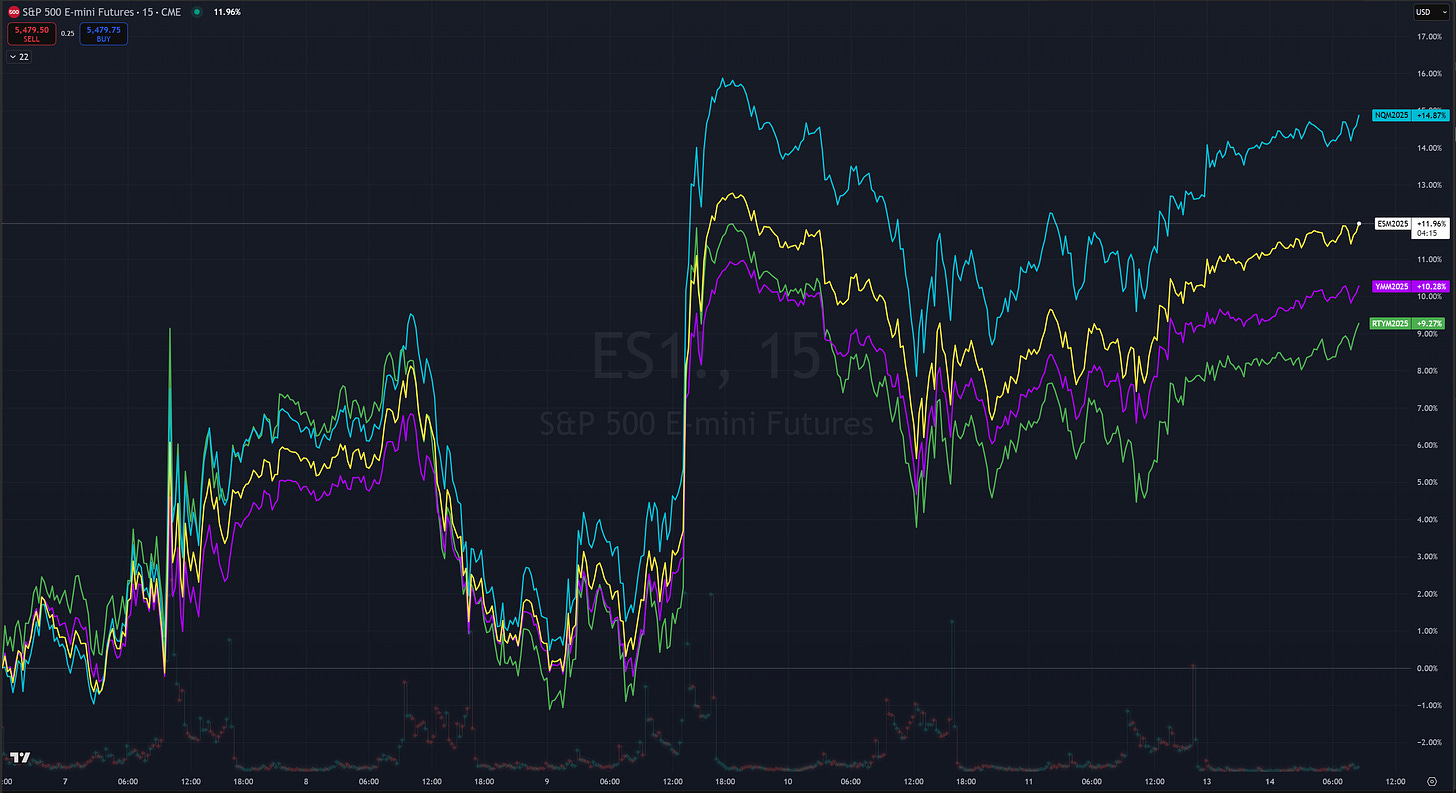Last week will go down as one for the books—not just for the headlines, but for the sheer velocity of market swings. What began with unresolved tariff tension spiraled into full-blown escalation... until a midweek pivot from the U.S. government triggered one of the sharpest rallies we’ve seen in years.
Trade Tensions Explode... Then Ease
Markets opened last week on shaky footing. Over the weekend, no progress was made on tariff negotiations, leaving a cloud of uncertainty hanging over Monday’s open. By midweek, the situation worsened: the U.S. officially hiked tariffs on China to 104%, prompting a swift retaliation—China slapped U.S. imports with an 84% tariff of their own.
Then came Tuesday night. A bond market “flash crash” unfolded, with U.S. bond prices dropping over 10% in two days—an unprecedented move that began bleeding into credit markets. The panic was enough to make the administration blink.
On Wednesday morning, in response to mounting pressure, the U.S. government enacted a 90-day delay on new tariffs for all countries except China, whose rate was lifted further to 125% (technically 145% when you include the original 20%). Other nations saw their tariff hikes paused at 10%.
The stated reason?
A time extension to negotiate with 70+ countries willing to talk and make a deal..
📈 Markets Soar on Delay
The shift in tone set off a historic rally. The Nasdaq-100 (QQQ) surged 12% on Wednesday alone. For the full week, QQQ led all indices, closing up 600bps, while small-caps (Russell 2000) lagged, gaining just 150bps. It was a ferocious snapback, catalyzed by political backpedaling and some carefully timed headlines.
🔍 Economic Data This Week: Light, but Don’t Sleep on It
Looking ahead, it’s a quieter calendar:
Retail Sales (Tuesday)
Fed Chair Powell Speaks (Wednesday)
Jobless Claims (Thursday)
Markets Closed for Good Friday
But make no mistake—trade headlines will dominate. With the White House signaling a softer tone and actively buying time to negotiate, last week may mark “peak escalation.” If so, we’re entering a phase where policy volatility declines, and markets could find some footing.
Where We Stand: Oversold Reversal, Sentiment Still Skeptical
Let’s put the bounce in context:
Only 14.06% of stocks are currently trading above their 50-day moving average—a signal of just how oversold we were.
The 200-day average sits higher, with 22% of stocks above it—still historically low.
So while the rally was powerful, it wasn’t built on strength—more like a coiled spring finally uncoiling. A single good headline was all it took.
Positioning remains light too. According to Deutsche Bank, institutional exposure is historically low. Hedge funds have de-grossed longs while maintaining gross leverage—code for unwinding bullish bets while holding onto their shorts. That’s not exactly a vote of confidence in the rally.
Technical Check-In: S&P 500 (SPX)
Keep reading with a 7-day free trial
Subscribe to Blackshore’s Substack to keep reading this post and get 7 days of free access to the full post archives.


